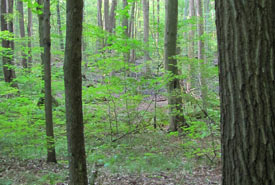Carolinian forest

Backus Woods Addition, Southern Norfolk Sand Plain, ON (Photo by NCC)
With its warmer temperatures throughout the year and lower latitudes, the Carolinian zone fosters an unparalleled level of biological richness. This is the smallest forest region in Canada at just one per cent of the country’s landmass. Yet Ontario’s Carolinian forests support the largest number of native tree species of any region and an estimated 25 per cent of our country’s species at risk, including Acadian flycatcher and cucumber tree. Many of these species are at the northern limit of their range.
What trees are found in the Carolinian zone?
Carolinian forest features a number of deciduous species:
- American beech
- black walnut
- hickory species (various)
- maple species (various)
- oak species (various)
What is NCC doing to help protect this forest?
The Nature Conservancy of Canada (NCC) has invested considerable resources in conserving Carolinian forest in southwestern Ontario. NCC is achieving conservation at a landscape level by building on a network of existing conservation lands. NCC has acquired some of the largest remnant forest blocks remaining in southwestern Ontario and is strategically restoring areas to create larger, better-connected habitats and to increase forest interior. Examples include projects in the Essex Forests and Wetlands natural area and Southern Norfolk Sand Plain natural area.




